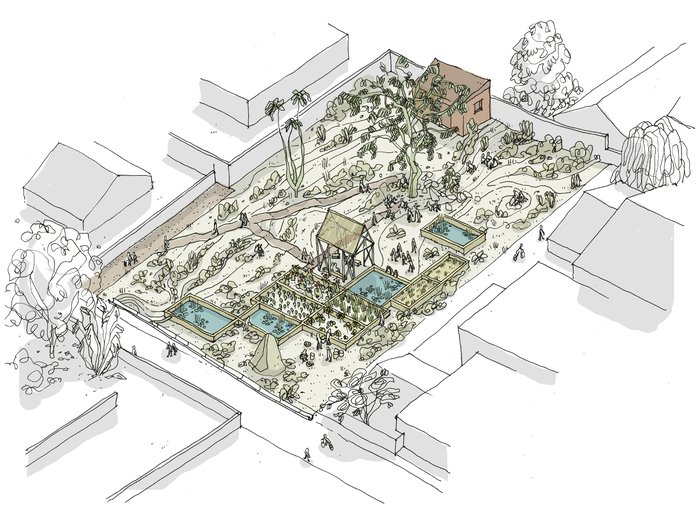
KAMPALA ARTS CENTRE / © PERISCOPE
22 March 2017
by James Hampton / Periscope
Periscope, architects and landscape architects have been working for the past year on the Kampala Arts Centre for 32° East | Ugandan Arts Trust. They have recently returned from a trip supported by the Artists' International Development Fund and sent us an update on the progress of their project.
Updating the design
We’ve been updating the design of the Arts Centre to reflect what we learnt on our trip. We’ve seen 32° East’s current home, spoken to some the artists and the wider members and met people from the Kampala Capital City Authority (KCCA) as well as many others. Our minds are filled with new information about the place, our client and the 32° East community, here are a few key things we’ve taken with us: One of the biggest lessons we’ve learnt is the need to use sustainable materials and construction techniques. We spent much of our time looking at various building technologies, and learnt that some of the most common building materials are also the least sustainable.
Roadside bricks
The ‘road-side’ bricks and their production are visible all around Kampala, with the small red brick kilns lining the roads (hence the name). The brick stack kilns (made from a few thousand bricks) are fired using tropical hardwood trunks which are left for a few days to burn. The bricks, apart from being very inconsistent in quality are a major factor in the deforestation of Uganda, and are a big hurdle in the city's efforts to build a sustainable capital.
Manufactured bricks
We visited the Maisha garden, a tranquil paradise just to the south of the city centre, perched on a hill overlooking lake Victoria. The spaces are cut into the side of the hill with a sequence of different enclosures for teaching, presentation and film screening. All made from another type of manufactured brick which tends to be much higher in quality and without the intense use of tropical hardwood kilns.
Earth blocks
A fairly new brick technology is emerging; using compressed earth to form blocks. These are again made from the soil but this time with a small addition of cement (usually somewhere between 7% - 10% depending upon the clay content of the earth). The cement along with a couple of weeks in the Uganda sunshine negates the need for firing thus creating vast savings in embodied energy. The resultant block is a pale red colour when dried and has a matt finish, able to withstand all weather conditions and with a high compressive strength. Plus of course, coming out of the earth it's almost cost-free, and can be interlocked without the use of mortar.
Making the site
Now that we’ve settled on this construction method we can focus on the process of the construction itself, using the site at first as a quarry: mining it for its material and at the same time shaping the landscape to create the basis for the rest of the architecture. The project (and the architecture) will start to take shape almost straight away. We will shape and form one part of the site in preparation for the next, whilst other parts of the site are already underway or even complete. The process of making the site is as much part of the architecture as the end result.
The Lodo Road garden
The other thing which really jumped out at us during our visit, was how much of an extra asset the new site is. The site sits within a quieter neighbourhood than the existing facility and so offers different possibilities of space - we discussed this with Teesa Bahana (Director of 32° East) and proposed making an intervention on the existing site to make it useful in the interim period before the construction. We met with Brian Mugagga (a Kampala based permaculture artist) and discussed ways we could activate the site, make it useful and productive and also make it a place where 32° East members and artists wanted to go. As much as anything it would start to establish it as a place to go in the city, a kind of precursor to the future Arts Centre.
Work starts this week on the Lodo Road garden - the space will include water filtration beds, a growing nursery, fruit and vegetable beds and a pavilion canopy. We hope it becomes a useful and different type of space for the 32° East community to use and enjoy. We’ll be going back toward to the end of April to see for ourselves.